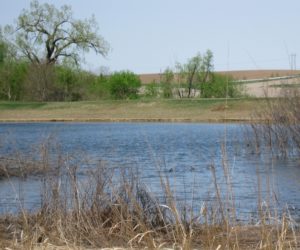Guest Post: Re: Climate (2019.12)
 Being a member of the national Land Trust Alliance gives Bur Oak Land Trust many resources, connections, and ideas to further our land conservation mission of protecting and conserving natural areas to enrich and engage current and future generations. Today I want to share with you an LTA blog on climate change written by Kelly Watkinson, land and climate program manager at the Land Trust Alliance.
Being a member of the national Land Trust Alliance gives Bur Oak Land Trust many resources, connections, and ideas to further our land conservation mission of protecting and conserving natural areas to enrich and engage current and future generations. Today I want to share with you an LTA blog on climate change written by Kelly Watkinson, land and climate program manager at the Land Trust Alliance.
National Geographic posted a blog over the weekend titled The Decade We Finally Woke Up to Climate Change. Is that an accurate headline? I think so.
While pockets of climate-deniers exist, I think it’s safe to say that people of all political and social stripes have awoken to this reality. We have seen and felt the impacts internationally and in our own communities as we grapple with our new and changing normal. Now we must take bold and transformative action. And that action will require more than a silver bullet. It requires silver buckshot: a plethora of land conservation actions we can take to address climate change. This is how we prepare for and lessen the threats we face.
If you’ll allow me another metaphor: One of the ways we can best move forward is by practicing what medical practitioners call preventative care. That concept is engrained in our psyche — and for good reason. We know our quality of life and the condition of our pocketbook is better when we prevent harm. So let’s apply that concept to climate change.
Flooding is one of the most costly and damaging types of natural hazard. In the United States, flooding has caused more than $8 billion in damage annually since 2000; future damages are expected to increase due to climate change. What’s our best path forward? A new study published last week in Nature Sustainability considers the options. “What would cost American taxpayers more? Paying now to protect undeveloped areas that are likely to flood in the coming decades? Or, allowing development to proceed based on current projections and paying for subsequent flood damages when they inevitably occur?” Not surprisingly, the preventative measure is much less costly. According to Kris Johnson, The Nature Conservancy’s deputy director of agriculture for North America and a co-author of the paper, “a dollar invested in floodplain protection today returns at least $5 is savings from avoided flood damages in the future and provide a host of additional benefits for habitat, wildlife, water quality and recreation.”
This new analysis and the conservation it encourages is another tool — one pellet in that silver buckshot I mentioned — to help land conservation organizations address our changing climate. It’s my hope that earnest action and real solutions brought about by this study and similar works are the true legacy of the decade we finally woke up to climate change.
Originally published on the LTA blog.


